What Is Carving In Longboarding?
Longboarding, the art of riding a long and sleek board, offers a thrilling and liberating experience. Whether you’re a beginner or a seasoned rider, carving on a longboard is a fundamental skill that can take your riding to new heights. Carving involves making fluid and sweeping turns by shifting your weight and applying subtle movements to your board. Here, I’ll guide you through some ways and tips to master the art of carving on a longboard.
- Stance and Balance: Before you start carving, establish a comfortable stance on your longboard. Most riders prefer a relaxed and slightly crouched stance with their feet shoulder-width apart. Keep your knees slightly bent and distribute your weight evenly between both feet. Maintaining a good balance is crucial for executing smooth and controlled carves.
- Positioning and Body Alignment: As you prepare to carve, position your body slightly forward, facing toward the direction you want to turn. Align your upper body and shoulders with your hips and keep your eyes focused on the path ahead. This alignment will help you generate more power and control during your turns.
- Initiate with Your Shoulders: To initiate a carve, use your shoulders as the starting point for your movement. Twist your upper body slightly in the direction you want to turn, while keeping your lower body stable and centered. This shoulder movement acts as a signal to your board and helps initiate the turn.
- Shift Your Weight: As you begin your turn, transfer your weight to your toes or heels, depending on the direction of your carve. For a heelside carve, shift your weight towards your heels, and for a toeside carve, shift your weight towards your toes. This weight shift allows you to engage the edges of your board effectively, providing grip and control throughout the turn.
- Use Your Arms: While carving, make use of your arms to enhance your body movements. By extending your arms outward in the direction of your turn, you create a counterbalance that aids in maintaining stability. Additionally, using your arms to guide your body’s rotation can add style and fluidity to your carves.
- Lean and Edge Control: To achieve deep and powerful carves, learn to lean into your turns. As you shift your weight and initiate the carve, lean your body towards the ground, keeping your upper body aligned with your board. This aggressive lean helps you engage the edges of your board, maximizing your control and allowing for tighter turns.
- Practice Progressive Carving: Start with gradual and gentle carves to build your confidence and understanding of your board’s responsiveness. As you become more comfortable, gradually increase your speed and lean into more aggressive carves. Practicing progressive carving not only improves your skills but also adds excitement and variety to your longboarding sessions.
- Find the Right Terrain: Choosing the right terrain is essential for a satisfying carving experience. Look for smooth and open roads with minimal traffic, preferably with long, sweeping curves that allow for extended carving. Avoid excessively steep or crowded areas until you have developed advanced skills.
- Safety First: Longboarding, like any other sport, requires proper safety precautions. Always wear a helmet and appropriate protective gear such as knee pads and wrist guards. Familiarize yourself with the local traffic laws and ride defensively, being aware of your surroundings at all times.
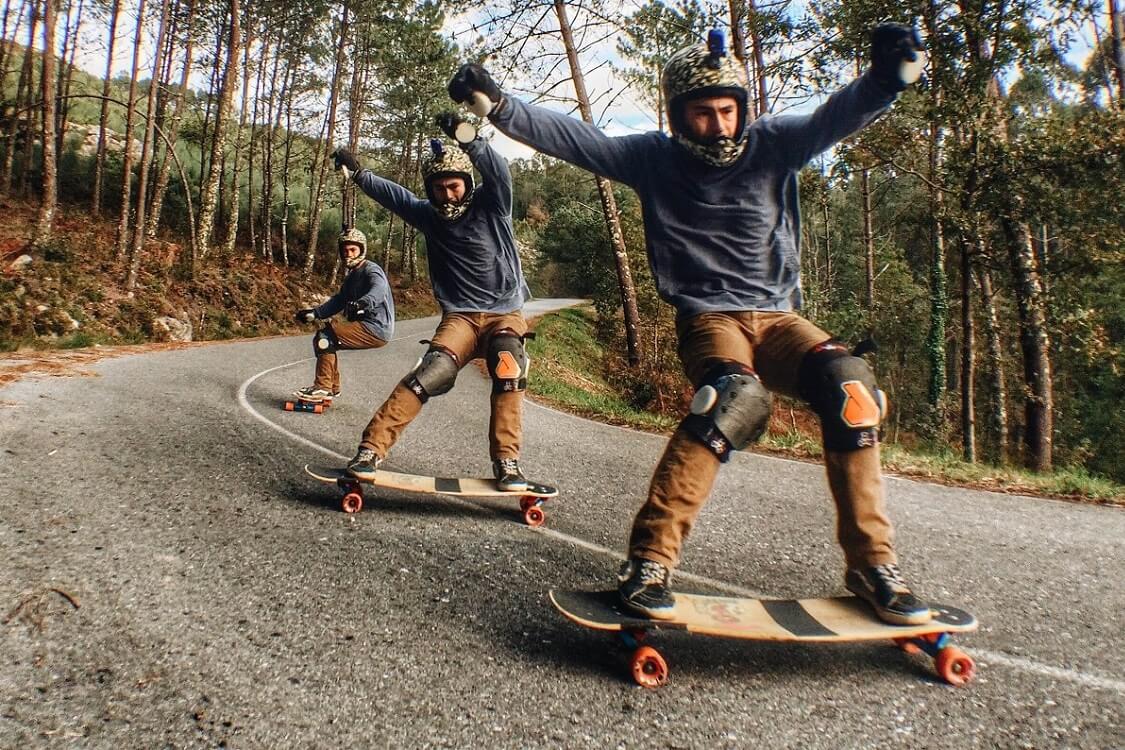
Remember, carving on a longboard is an art that combines technique, balance, and a deep connection with your board. It takes practice and patience to master, but once you’ve honed your skills, the sensation of gliding through smooth carves will become an addictive and exhilarating experience. So, grab your board, find the perfect road, and let the art of carving on a longboard take you on a thrilling journey of self-expression and freedom.
Carving On Longboard
| Parameter | Ways and Tips for Carving on a Longboard |
|---|---|
| Stance | Find a comfortable, relaxed stance with feet shoulder-width apart. |
| Balance | Maintain even weight distribution and balance between both feet. |
| Positioning | Face towards the direction of the turn with the upper body forward. |
| Body Alignment | Align shoulders with hips and keep eyes focused on the path ahead. |
| Initiation | Use shoulder movement as a signal to initiate the turn. |
| Weight Shifting | Transfer weight to toes or heels based on the turn direction. |
| Arm Usage | Extend arms outward to provide stability and enhance body rotation. |
| Lean and Edge Control | Lean into the turn, engaging the edges of the board for control. |
| Progressive Carving Practice | Start with gradual carves and gradually increase speed and intensity. |
| Terrain Selection | Choose smooth, open roads with minimal traffic and sweeping curves. |
| Safety Measures | Wear a helmet and protective gear, follow traffic laws, and ride defensively. |
This expanded table provides a comprehensive overview of the various parameters associated with each way and tip for carving on a longboard.
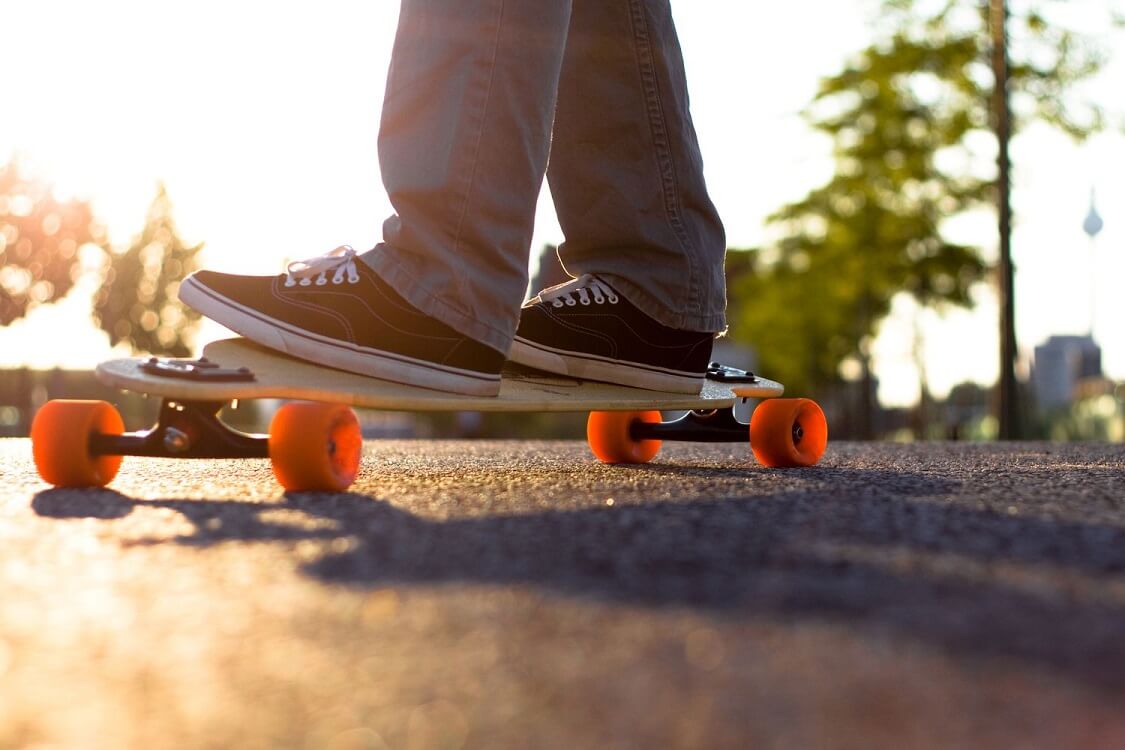
Stance and Balance
Carving on a longboard begins with establishing the right stance and maintaining a solid balance. Your stance sets the foundation for a controlled and fluid ride. To find the optimal stance, start by positioning your feet shoulder-width apart on the board. Keep your knees slightly bent, allowing for flexibility and absorption of the terrain.
It’s important to strike a balance between stability and mobility, so avoid locking your knees or standing too rigidly. By maintaining a relaxed and balanced stance, you’ll have better control over your board and be ready to execute smooth and precise carves.
Achieving and maintaining balance is crucial when it comes to carving on a longboard. Balance starts with evenly distributing your weight between both feet. This even weight distribution provides stability and allows for quick weight shifts during turns. Additionally, keeping your core engaged and your upper body aligned with your hips helps maintain a centered balance.
As you gain more experience and confidence, you can experiment with weight distribution, shifting your weight slightly forward or backward depending on the desired carving style or the terrain you’re riding on. Developing a strong sense of balance will enhance your control and responsiveness, enabling you to execute fluid and dynamic carves on your longboard.
Positioning and Body Alignment
Positioning and body alignment play crucial roles in the art of carving on a longboard. Proper positioning starts with facing toward the direction of the turn. As you prepare to carve, align your upper body, including your shoulders and torso, with your hips.
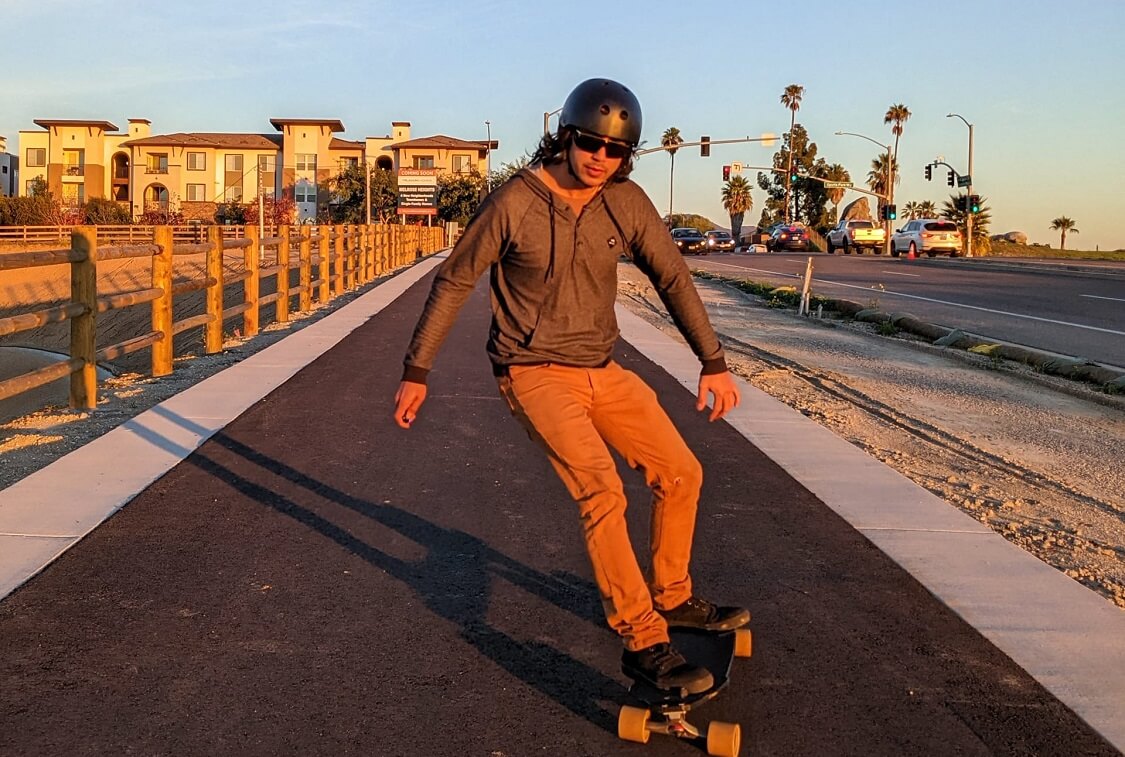
This alignment creates a strong and stable foundation for initiating and executing the carve. By positioning yourself in the direction of the turn, you set yourself up for better control and balance throughout the maneuver.
Body alignment is equally important when it comes to carving on a longboard. By aligning your upper body with your lower body, you maintain a cohesive and balanced posture. Keep your eyes focused on the path ahead, allowing you to anticipate and react to any changes in the terrain. Proper body alignment not only aids in stability but also contributes to generating power and control during your carves.
It allows you to engage your muscles effectively and transfer energy to the board, resulting in smoother and more controlled turns. By mastering the art of positioning and body alignment, you’ll be able to unleash the full potential of your longboard and carve with confidence and finesse.
Initiate with Your Shoulders
When it comes to carving on a longboard, initiating the turn with your shoulders is a fundamental technique. Your shoulders act as the starting point for your movement, guiding your board through the carve. To initiate a turn, begin by twisting your upper body slightly in the direction you want to go.
This movement signals your intent to the board, preparing it for the upcoming maneuver. By using your shoulders to initiate the turn, you engage your core muscles and set the stage for a smooth and controlled carve.
Initiating the carve with your shoulders also helps in maintaining balance and stability throughout the maneuver. As you twist your upper body, your hips, and lower body remain stable, providing a solid base of support. This separation of upper and lower body movement allows for precise and fluid carving.
By mastering the art of initiating with your shoulders, you can enhance your overall control and create beautiful arcs as you glide through turns on your longboard. It’s a technique that, when combined with other skills, contributes to the artistry and finesse of carving.
Shift Your Weight
One of the key elements in carving on a longboard is the skillful shift of your weight. As you initiate a turn, shifting your weight in the appropriate direction is crucial for maintaining balance and control. For a heelside carve, you should transfer your weight towards your heels, while for a toeside carve, shift your weight towards your toes.
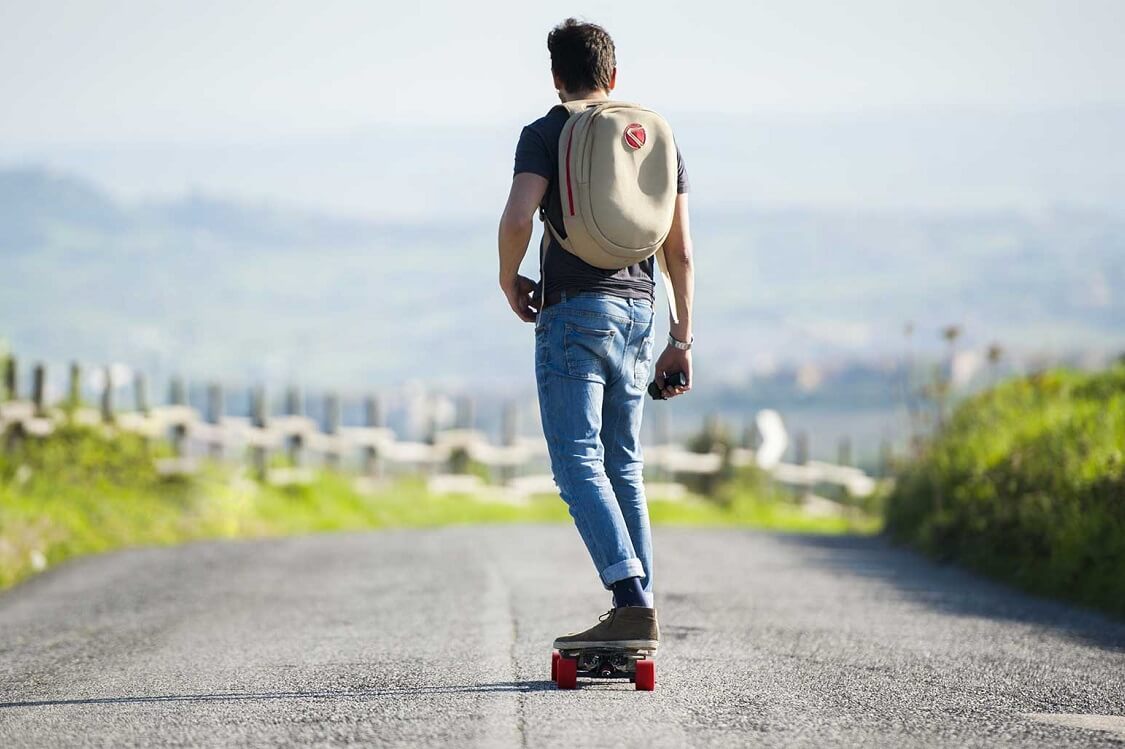
This weight transfer allows you to engage the edges of your board effectively, providing grip and stability throughout the turn. By actively shifting your weight, you can optimize the board’s responsiveness and achieve tighter and more dynamic carves.
The timing and precision of weight shifting are essential for successful carving. As you begin the turn, gradually transfer your weight, allowing the board to respond to your movements. Start with a subtle weight shift and progressively increase it as you gain confidence and control.
Remember to keep your movements fluid and avoid abrupt shifts, as this can lead to instability. By mastering the art of weight shifting, you can unlock the full potential of your longboard and experience the exhilarating sensation of smoothly gliding through beautifully carved turns.
Use Your Arms
Using your arms effectively while carving on a longboard can greatly enhance your overall performance and add style to your maneuvers. Your arms serve as an extension of your body’s movement, providing balance and stability during turns. By extending your arms outward in the direction of your turn, you create a counterbalance that helps maintain stability and control.
This counterbalance allows you to maintain a centered and balanced position while leaning into the turn. Additionally, using your arms to guide your body’s rotation adds a level of fluidity and grace to your carves, elevating them from mere maneuvers to a true expression of style.
In addition to providing balance, your arms can also play a role in generating momentum and power. By actively swinging your arms in coordination with your body movements, you can generate more force and energy during your carves. This can result in sharper, more aggressive turns and greater control over your longboard.
As you become more comfortable with carving, experiment with different arm movements and find a rhythm that complements your style of riding. Ultimately, using your arms effectively while carving on a longboard allows you to harness the full potential of your body’s movement, adding finesse and flair to your riding experience.
Lean and Edge Control
When it comes to carving on a longboard, mastering the art of leaning and edge control is essential for executing deep and powerful turns. As you initiate a carve, it’s important to lean into the turn by tilting your body towards the ground. This aggressive lean helps you engage the edges of your board and transfer your weight effectively, resulting in increased control and responsiveness.
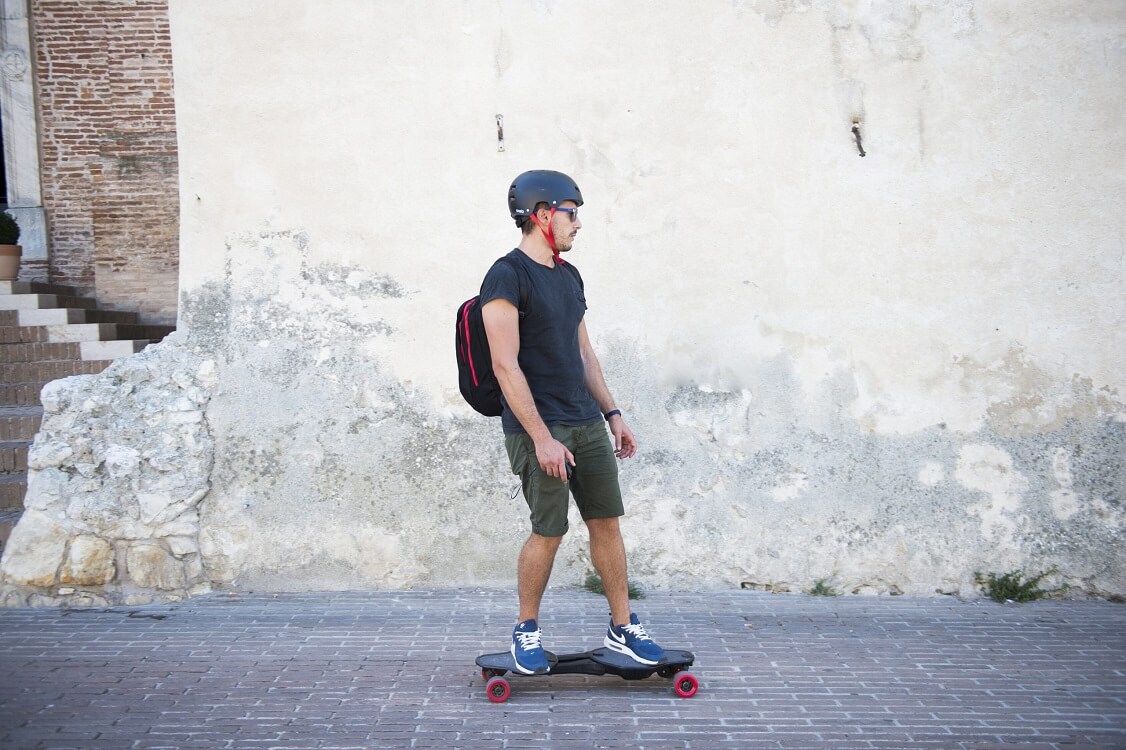
The deeper you lean, the tighter your turn radius becomes, allowing you to navigate corners and curves with precision. Balancing this lean with your body alignment and weight distribution ensures a stable and controlled carve.
Edge control is closely tied to leaning and plays a crucial role in carving. Your longboard’s edges provide traction and grip on the road, allowing you to carve smoothly. By applying pressure to the appropriate edges of your board, you can control the amount of grip and slide during a carve. When leaning into a heelside carve, you engage the heelside edge, while a toeside carve requires pressure on the toeside edge.
Learning to manipulate your edge control enables you to fine-tune your turns, adjust your speed, and maintain stability throughout your carving maneuvers. With practice, you’ll develop a keen sense of edge control, allowing you to carve with confidence and finesse on your longboard.
Practice Progressive Carving
Practice progressive carving is a valuable approach to improving your skills and expanding your abilities on a longboard. It involves starting with gradual and gentle carves and progressively increasing the difficulty and intensity as you gain proficiency. Beginning with mellow turns allows you to build confidence and familiarize yourself with the mechanics of carving.
Focus on mastering the fundamentals, such as weight shifting, body positioning, and edge control, during these initial stages. As you become more comfortable, gradually increase your speed and lean into more aggressive carves, challenging yourself to execute sharper and tighter turns. This progressive approach not only enhances your technical skills but also adds excitement and variety to your longboarding sessions.
Engaging in progressive carving enables you to develop a solid foundation and a deeper understanding of the nuances of carving. It encourages a gradual progression, preventing you from becoming overwhelmed and reducing the risk of injury. Through incremental challenges, you’ll refine your technique, build muscle memory, and improve your overall coordination on the longboard.
Remember to always prioritize safety and ride within your abilities. With dedicated practice and a progressive mindset, you’ll witness a remarkable transformation in your carving skills and experience the exhilaration of executing smooth, dynamic, and controlled turns on your longboard.
Find the Right Terrain
Finding the right terrain is a vital aspect of carving on a longboard. When it comes to carving, you’ll want to seek out smooth and open roads that provide ample space for maneuvering. Look for roads with minimal traffic and a well-paved surface, as rough or uneven terrain can impede your ability to execute fluid turns.
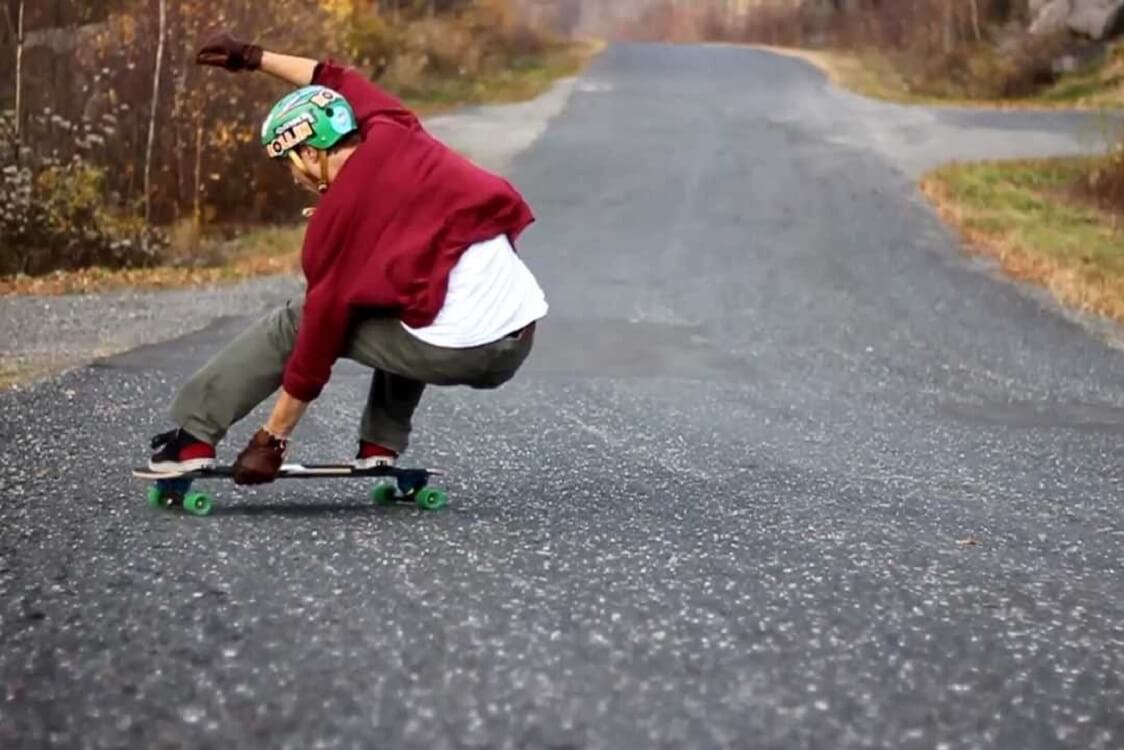
It’s also beneficial to find roads with long, sweeping curves that allow for extended carving. Such terrain enables you to fully immerse yourself in the carving experience, maintaining flow and rhythm as you navigate through the turns. By choosing the right terrain, you can enhance your carving abilities and maximize the enjoyment of your longboarding sessions.
Moreover, varying the terrain you ride on can add excitement and challenge to your carving endeavors. While smooth roads are ideal for honing your technique, don’t be afraid to explore different environments. You may discover that carving on hills or inclines offers a thrilling and dynamic experience, as the change in elevation adds an extra element of gravity and speed to your turns.
However, always exercise caution and ensure you have the necessary skills and control before attempting more advanced terrains. Whether it’s a gentle, winding road or a thrilling downhill descent, finding the right terrain for carving on your longboard opens up a world of possibilities and keeps your longboarding adventures fresh and exhilarating.
Safety First
When it comes to carving on a longboard, safety should always be a top priority. Riding a longboard can be exciting, but it’s important to take precautions to minimize the risk of accidents or injuries. Start by wearing proper safety gear, including a helmet, knee pads, elbow pads, and wrist guards.
These protective gears can greatly reduce the impact of falls and provide necessary protection in case of unexpected incidents. It’s also advisable to wear appropriate clothing that allows for freedom of movement and visibility.
Additionally, it’s crucial to be aware of your surroundings and ride defensively. Pay attention to traffic rules and local regulations when choosing your riding location. Avoid busy roads and intersections, and always yield to pedestrians and other vehicles. Maintain a safe distance from cars, giving yourself enough time to react to any sudden changes. Practicing situational awareness and anticipating potential hazards can go a long way in ensuring a safe carving experience.
Lastly, it’s important to regularly inspect your longboard for any signs of wear and tear. Check the trucks, wheels, and bearings to ensure they are in good condition and make any necessary replacements or repairs. By prioritizing safety and taking necessary precautions, you can enjoy the thrill of carving on a longboard while minimizing the risk of accidents or injuries.
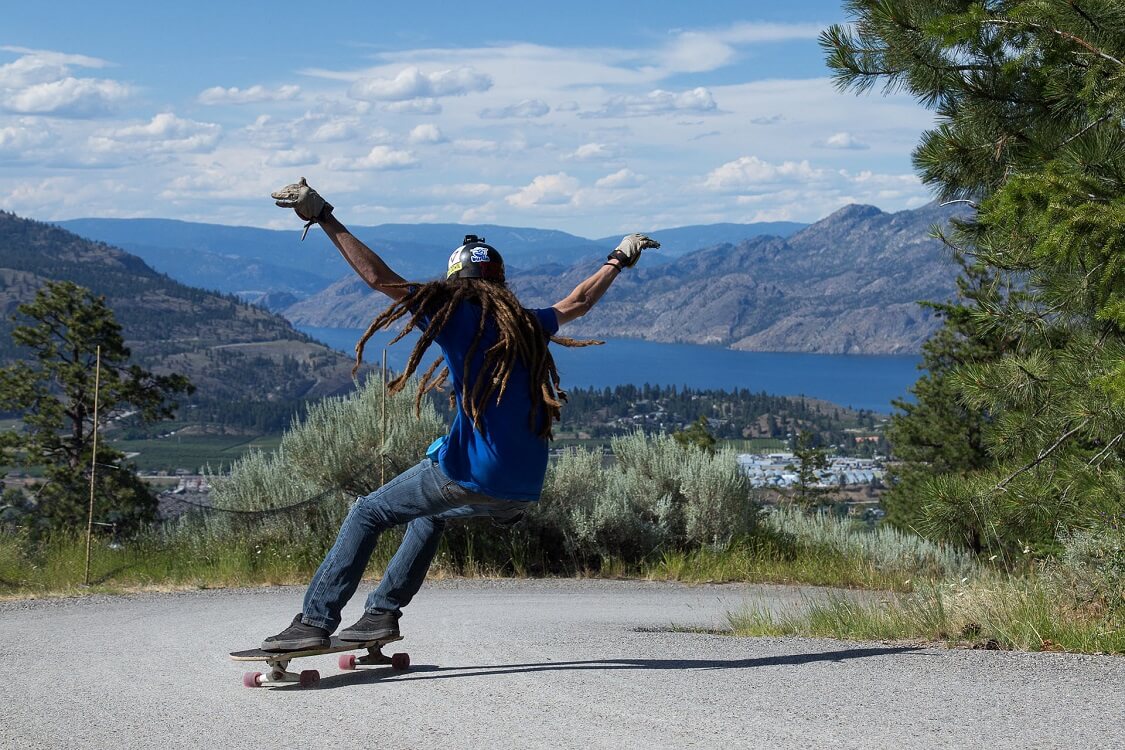
Conclusion
In conclusion, riding a longboard is a thrilling and rewarding experience that offers a unique blend of freedom, creativity, and athleticism. By following the ways and tips discussed, such as finding the right stance and balance, initiating with your shoulders, shifting your weight, using your arms, mastering lean and edge control, practicing progressive carving, finding the right terrain, and prioritizing safety, you can unlock the full potential of your electric longboard and embark on exhilarating carving adventures.
With patience, practice, and a mindset for continuous improvement, you’ll develop the skills and confidence to carve with grace and precision, exploring the endless possibilities that the art of longboarding has to offer. So grab your longboard, embrace the joy of carving, and let the open road be your canvas for self-expression and pure enjoyment.
How To Ride Longboard Video Tips
FAQ
Q: What is the best stance for riding a longboard?
A: The best stance for riding a longboard is to position your feet shoulder-width apart, with your knees slightly bent. This provides a stable and balanced foundation for better control and maneuverability.
Q: How do I initiate a turn on a longboard?
A: To initiate a turn on a longboard, start by twisting your upper body slightly in the direction you want to go. This movement with your shoulders signals the board to initiate the turn, allowing you to flow smoothly through your carve.
Q: How do I maintain balance while carving on a longboard?
A: Maintaining balance while carving on a longboard requires even weight distribution between both feet. Additionally, keeping your core engaged and aligning your upper body with your hips helps maintain a centered balance. Practice and experience will help you develop a strong sense of balance.
Q: What role do my arms play in carving on a longboard?
A: Your arms play a crucial role in carving on a longboard. They help provide stability and balance by extending them outward in the direction of your turn, acting as a counterbalance. Additionally, using your arms in coordination with your body movements adds style and fluidity to your carves.
Q: How can I improve my carving skills on a longboard?
A: Improving your carving skills on a longboard requires consistent practice. Start with gradual carves and progressively increase the difficulty and intensity. Focus on mastering weight shifting, body positioning, edge control, and progressive carving techniques. Additionally, seeking out the right terrain and prioritizing safety is essential for enhancing your skills.
Q: What safety measures should I take when riding a longboard?
A: When riding a longboard, it’s crucial to prioritize safety. Wear protective gear such as a helmet, knee pads, elbow pads, and wrist guards. Observe traffic rules, ride defensively, and be aware of your surroundings. Regularly inspect your longboard for any signs of wear and tear. By taking these precautions, you can minimize the risk of accidents and enjoy a safe longboarding experience.
Q: What is the recommended speed for carving on a longboard?
A: The recommended speed for carving on a longboard depends on your skill level and comfort zone. It’s advisable to start at a moderate speed that allows you to maintain control and balance. As you gain experience and confidence, you can gradually increase your speed while ensuring that you can still execute smooth and controlled carves.
Q: How can I improve my edge control while carving on a longboard?
A: Improving your edge control while carving on a longboard comes with practice and experience. Focus on applying pressure to the appropriate edges of your board during turns – heelside for heelside carves and toeside for toeside carves. Experiment with different amounts of pressure to find the right balance between grip and slide. Developing a strong sense of edge control allows you to fine-tune your turns, adjust your speed, and maintain stability throughout your carving maneuvers.
Q: Can I carve on a longboard with soft wheels?
A: Yes, you can carve on a longboard with soft wheels. Soft wheels provide more grip and better shock absorption, making them suitable for carving on various surfaces. They offer a smoother ride and are more forgiving on rough or uneven terrains. However, keep in mind that softer wheels might provide less slide for aggressive carves. It’s important to choose the right durometer (hardness) of wheels based on your preferred style of carving and the type of terrain you’ll be riding on.

